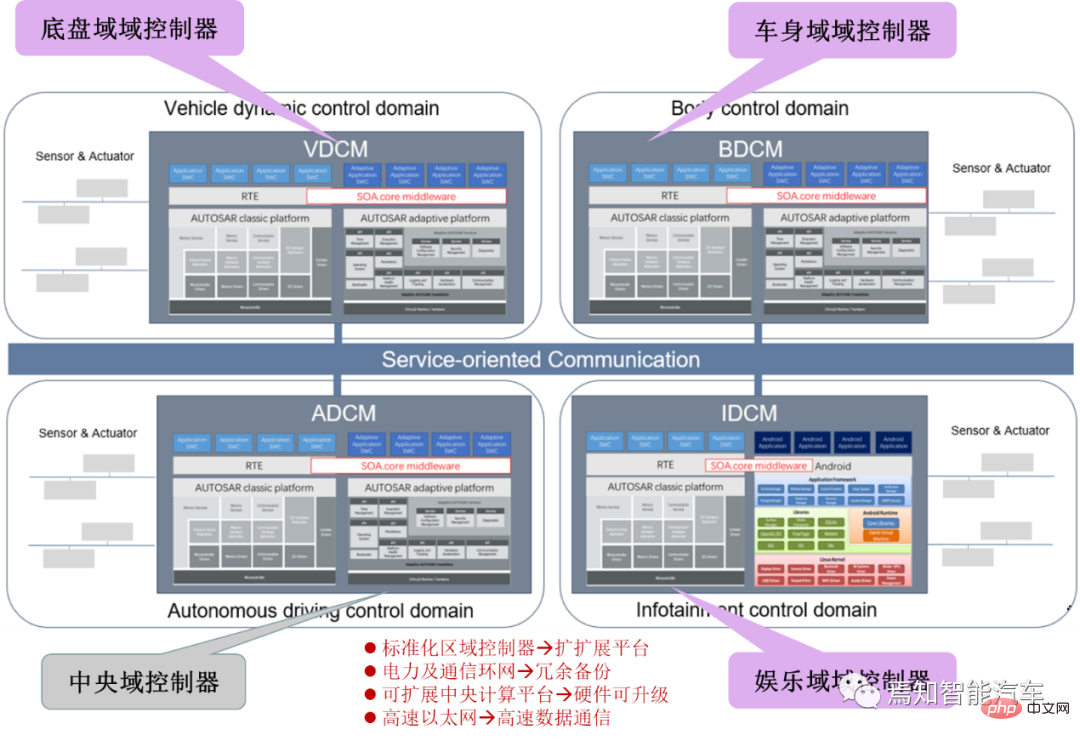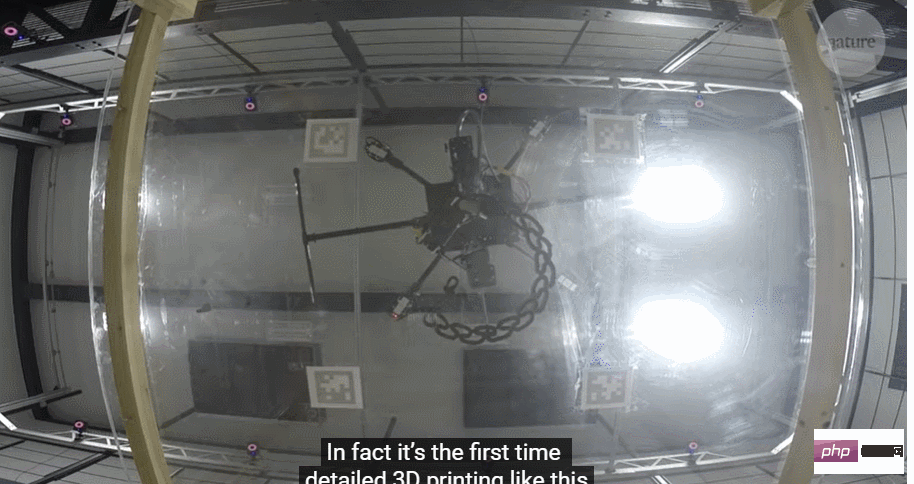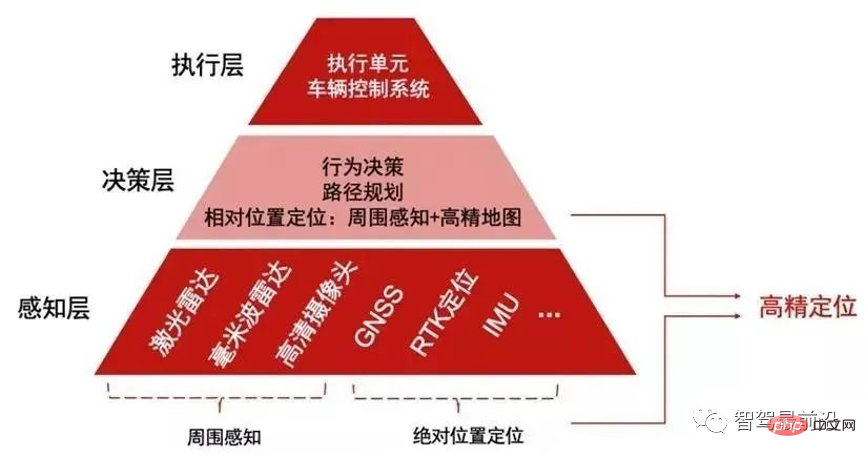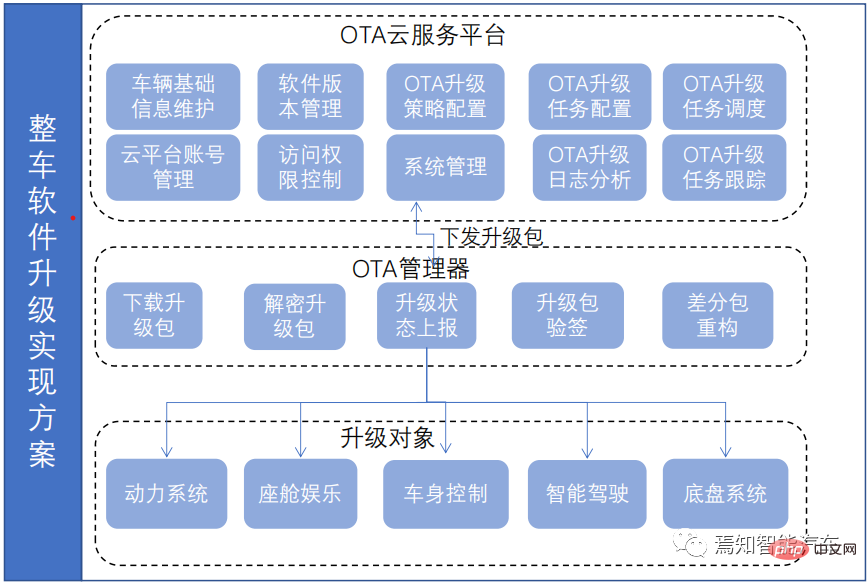1 From glory to bottom, where will autonomous driving go?
The autonomous driving industry has entered a stage of rapid development since 2013. In 2016, the autonomous driving industry ushered in a rapid development During the development stage, investment and financing events by related companies gradually increased, and autonomous driving companies began to bloom everywhere. It reached its peak in 2018, with as many as 472 newly registered companies, 78 comprehensive investment and financing events, and the disclosed investment and financing amount as high as 81.1 billion yuan.
Beginning in 2019, the autonomous driving industry began to enter a stage of steady development. In 2020, due to uncontrollable factors, the pace of development of the autonomous driving industry began to slow down, but the amount of investment and financing in the autonomous driving industry Still as high as 43.63 billion yuan, a year-on-year increase of 136.9%. The autonomous driving track is still hot in 2021. In the first three quarters alone, there have been 69 investment and financing events, with a total investment amount of 62.9 billion yuan. As of October 2022, there are 5,682 autonomous driving companies in my country. In the first half of 2022, there will be 201 new autonomous driving-related companies. More and more players hope to get a share of the autonomous driving industry. Car companies and Internet companies have also come to the same track and started a competitive model. The autonomous driving industry is showing a diversified trend.
Looking back at the self-driving industry before 2022, the development of the self-driving industry seems to have entered a situation where a hundred schools of thought are contending. However, entering 2023, the self-driving industry seems to have been torn into a big hole. The development situation has been broken again and again. At the beginning of 2023, autonomous truck upstart Embark declared bankruptcy. As a unicorn company with a market value of US$5.2 billion, it only took 16 months from its peak to bankruptcy. Waymo, as a recognized benchmark company in the field of autonomous driving, also announced the launch of layoff plans in early 2023. On May 18, TuSimple, a self-driving truck company that is facing a delisting crisis, also announced that its board of directors approved a "further restructuring plan" on May 18, which will eliminate 300 jobs, accounting for 10% of the company's total. 30% of employees; also in May, AIWAYS, a new domestic car-making force, frequently broke news about wage arrears and social security suspensions. Before that, WM Motor had already broken news about work suspensions and store closures. ; Pony.ai also broke the news of laying off 50% of its employees.
Entering the autonomous driving industry in 2023, a series of hot words such as layoffs, bankruptcies, and plummeting market value are constantly lingering. The autonomous driving industry seems to have passed the top of the mountain and is reaching the bottom. The road keeps going crazy, and there still doesn’t seem to be an accurate time or answer for when the bottom can be reached. Whether it is a car company or an Internet company, it seems that there is no persistence and enthusiasm for autonomous driving as in previous years.
2 The road to profitability is bleak, and it may be the original sin to make profits difficult
The "cold wave" in the autonomous driving industry will continue, except that it is all In autonomous driving companies, they are reducing personnel expenses and hoping to survive the cold winter. Many Internet companies that are determined to deploy the autonomous driving industry are also cutting back on autonomous driving investments and preparing to use more resources on other projects. The reason may be that autonomous driving has a long road to profitability, and when the market environment is not ideal, cutting off the tail to survive may be the only option.
The autonomous driving industry is like a bottomless pit, and the funds invested are completely out of proportion to the actual profits that can be obtained. With the development of the autonomous driving industry so far, the actual places where you can experience it may only be in a relatively closed environment such as a few factories and schools, and more functions are still used to undertake tasks such as picking up and delivering express delivery, sightseeing at scenic spots, etc., and these usage scenarios Autonomous driving in today's world can only be regarded as low-speed autonomous driving. There is still a long technical gap between the high-speed autonomous driving scenarios we have been pursuing. Even though low-speed autonomous driving is relatively mature, the market demand and market size are not large, making it unrealistic to achieve large-scale profits.
In fact, car companies and companies involved in the autonomous driving industry have always hoped to apply autonomous driving in high-speed autonomous driving scenarios. This is also the significance of autonomous driving technology research. On June 27, 2020, Didi launched an autonomous driving manned application project in Jiading, Shanghai, hoping to bring the use of high-speed autonomous driving into our lives. However, due to the immaturity of the technology and the high investment costs, Didi’s self-driving taxis have still not achieved large-scale application three years later. The autonomous driving craze has been going on for nearly 10 years, but its technology has not achieved large-scale breakthroughs.
From a technical perspective, due to the shortcomings of autonomous driving perception hardware and deep learning, the development of high-speed autonomous driving is now inseparable from the support of high-precision maps, and because high-precision map detection involves traffic environment data Information, the country has not opened up large areas, which has resulted in autonomous driving based on high-precision maps can only be implemented in some areas. This is like locking autonomous driving in a cage, making it technically impossible to achieve large-scale development. and breakthroughs. Even though many car companies are now pursuing the technical direction of "emphasis on perception, light on maps", and many experts have even proposed the development model of intelligent network connection, it is still in its early stages due to its high technical difficulty and high investment cost.
From a cost perspective, even if high-precision map detection can be implemented on a large scale, high-precision maps need to be updated in a timely manner, which requires a lot of labor costs. This is why at this stage One of the reasons why most car companies are pursuing "emphasis on perception and light on maps". And because the cost of autonomous driving hardware is too high at this stage, if you want consumers to truly enjoy the autonomous driving function, the cost of a single vehicle is beyond imagination. It is not realistic for consumers to buy it on a large scale, which has caused many companies to A lot of investment has been made in autonomous driving, but the profit is very small.
3 Give up or persist, maybe the market will give the answer
Should we continue to insist on autonomous driving? Maybe the market has already given the answer. "Laziness" has always been the driving force for technological progress. When traveling by car, the driver's role will be highly bound. Freeing the driver's hands and allowing self-driving cars to carry passengers and cargo will undoubtedly liberate the necessity of the human role in the travel environment. . However, since the development of autonomous driving, many high-speed autonomous driving experiences have continued to appear. However, people's attitude towards autonomous driving is more of a taste of early adopters. If they want it to truly enter people's lives, many people may still raise questions and concerns.
Currently, autonomous driving is still at the L2 level. In order to highlight the advancement of their technology, many new car manufacturers will describe it as L2 or even L2 in their sales promotions. L3 level autonomous driving undoubtedly provides a wrong signal to the development of autonomous driving. Many autonomous driving accidents are caused by drivers overly trusting the autonomous driving system. Since autonomous driving is a very new thing for consumers at this stage, every accident involving autonomous driving will receive a lot of publicity and popularity, which has also caused everyone's distrust of autonomous driving to continue to expand.
The immaturity of the technology, the low cost, and the distrust of the market have put the development of autonomous driving into an endless loop. This has also led to the lack of large-scale autonomous driving so far. Reasons for application. In order to solve these problems, more time and cost investment are required, which is a challenge for both car companies and Internet companies. The front line for the implementation of autonomous driving is constantly being stretched, making it difficult for many companies to bear the burden and can only give up. Investing in autonomous driving related projects, for them, giving up autonomous driving may also be a kind of reconciliation for themselves. Even so, many people will continue to follow the development path of the autonomous driving industry, but it is still impossible to say when we will see the light of day!
The above is the detailed content of Giving up autonomous driving is also a kind of reconciliation. For more information, please follow other related articles on the PHP Chinese website!
 SOA中的软件架构设计及软硬件解耦方法论Apr 08, 2023 pm 11:21 PM
SOA中的软件架构设计及软硬件解耦方法论Apr 08, 2023 pm 11:21 PM对于下一代集中式电子电器架构而言,采用central+zonal 中央计算单元与区域控制器布局已经成为各主机厂或者tier1玩家的必争选项,关于中央计算单元的架构方式,有三种方式:分离SOC、硬件隔离、软件虚拟化。集中式中央计算单元将整合自动驾驶,智能座舱和车辆控制三大域的核心业务功能,标准化的区域控制器主要有三个职责:电力分配、数据服务、区域网关。因此,中央计算单元将会集成一个高吞吐量的以太网交换机。随着整车集成化的程度越来越高,越来越多ECU的功能将会慢慢的被吸收到区域控制器当中。而平台化
 新视角图像生成:讨论基于NeRF的泛化方法Apr 09, 2023 pm 05:31 PM
新视角图像生成:讨论基于NeRF的泛化方法Apr 09, 2023 pm 05:31 PM新视角图像生成(NVS)是计算机视觉的一个应用领域,在1998年SuperBowl的比赛,CMU的RI曾展示过给定多摄像头立体视觉(MVS)的NVS,当时这个技术曾转让给美国一家体育电视台,但最终没有商业化;英国BBC广播公司为此做过研发投入,但是没有真正产品化。在基于图像渲染(IBR)领域,NVS应用有一个分支,即基于深度图像的渲染(DBIR)。另外,在2010年曾很火的3D TV,也是需要从单目视频中得到双目立体,但是由于技术的不成熟,最终没有流行起来。当时基于机器学习的方法已经开始研究,比
 多无人机协同3D打印盖房子,研究登上Nature封面Apr 09, 2023 am 11:51 AM
多无人机协同3D打印盖房子,研究登上Nature封面Apr 09, 2023 am 11:51 AM我们经常可以看到蜜蜂、蚂蚁等各种动物忙碌地筑巢。经过自然选择,它们的工作效率高到叹为观止这些动物的分工合作能力已经「传给」了无人机,来自英国帝国理工学院的一项研究向我们展示了未来的方向,就像这样:无人机 3D 打灰:本周三,这一研究成果登上了《自然》封面。论文地址:https://www.nature.com/articles/s41586-022-04988-4为了展示无人机的能力,研究人员使用泡沫和一种特殊的轻质水泥材料,建造了高度从 0.18 米到 2.05 米不等的结构。与预想的原始蓝图
 如何让自动驾驶汽车“认得路”Apr 09, 2023 pm 01:41 PM
如何让自动驾驶汽车“认得路”Apr 09, 2023 pm 01:41 PM与人类行走一样,自动驾驶汽车想要完成出行过程也需要有独立思考,可以对交通环境进行判断、决策的能力。随着高级辅助驾驶系统技术的提升,驾驶员驾驶汽车的安全性不断提高,驾驶员参与驾驶决策的程度也逐渐降低,自动驾驶离我们越来越近。自动驾驶汽车又称为无人驾驶车,其本质就是高智能机器人,可以仅需要驾驶员辅助或完全不需要驾驶员操作即可完成出行行为的高智能机器人。自动驾驶主要通过感知层、决策层及执行层来实现,作为自动化载具,自动驾驶汽车可以通过加装的雷达(毫米波雷达、激光雷达)、车载摄像头、全球导航卫星系统(G
 超逼真渲染!虚幻引擎技术大牛解读全局光照系统LumenApr 08, 2023 pm 10:21 PM
超逼真渲染!虚幻引擎技术大牛解读全局光照系统LumenApr 08, 2023 pm 10:21 PM实时全局光照(Real-time GI)一直是计算机图形学的圣杯。多年来,业界也提出多种方法来解决这个问题。常用的方法包通过利用某些假设来约束问题域,比如静态几何,粗糙的场景表示或者追踪粗糙探针,以及在两者之间插值照明。在虚幻引擎中,全局光照和反射系统Lumen这一技术便是由Krzysztof Narkowicz和Daniel Wright一起创立的。目标是构建一个与前人不同的方案,能够实现统一照明,以及类似烘烤一样的照明质量。近期,在SIGGRAPH 2022上,Krzysztof Narko
 一文聊聊智能驾驶系统与软件升级的关联设计方案Apr 11, 2023 pm 07:49 PM
一文聊聊智能驾驶系统与软件升级的关联设计方案Apr 11, 2023 pm 07:49 PM由于智能汽车集中化趋势,导致在网络连接上已经由传统的低带宽Can网络升级转换到高带宽以太网网络为主的升级过程。为了提升车辆升级能力,基于为车主提供持续且优质的体验和服务,需要在现有系统基础(由原始只对车机上传统的 ECU 进行升级,转换到实现以太网增量升级的过程)之上开发一套可兼容现有 OTA 系统的全新 OTA 服务系统,实现对整车软件、固件、服务的 OTA 升级能力,从而最终提升用户的使用体验和服务体验。软件升级触及的两大领域-FOTA/SOTA整车软件升级是通过OTA技术,是对车载娱乐、导
 internet的基本结构与技术起源于什么Dec 15, 2020 pm 04:48 PM
internet的基本结构与技术起源于什么Dec 15, 2020 pm 04:48 PMinternet的基本结构与技术起源于ARPANET。ARPANET是计算机网络技术发展中的一个里程碑,它的研究成果对促进网络技术的发展起到了重要的作用,并未internet的形成奠定了基础。arpanet(阿帕网)为美国国防部高级研究计划署开发的世界上第一个运营的封包交换网络,它是全球互联网的始祖。
 综述:自动驾驶的协同感知技术Apr 08, 2023 pm 03:01 PM
综述:自动驾驶的协同感知技术Apr 08, 2023 pm 03:01 PMarXiv综述论文“Collaborative Perception for Autonomous Driving: Current Status and Future Trend“,2022年8月23日,上海交大。感知是自主驾驶系统的关键模块之一,然而单车的有限能力造成感知性能提高的瓶颈。为了突破单个感知的限制,提出协同感知,使车辆能够共享信息,感知视线之外和视野以外的环境。本文回顾了很有前途的协同感知技术相关工作,包括基本概念、协同模式以及关键要素和应用。最后,讨论该研究领域的开放挑战和问题


Hot AI Tools

Undresser.AI Undress
AI-powered app for creating realistic nude photos

AI Clothes Remover
Online AI tool for removing clothes from photos.

Undress AI Tool
Undress images for free

Clothoff.io
AI clothes remover

AI Hentai Generator
Generate AI Hentai for free.

Hot Article

Hot Tools

Dreamweaver CS6
Visual web development tools

Dreamweaver Mac version
Visual web development tools

mPDF
mPDF is a PHP library that can generate PDF files from UTF-8 encoded HTML. The original author, Ian Back, wrote mPDF to output PDF files "on the fly" from his website and handle different languages. It is slower than original scripts like HTML2FPDF and produces larger files when using Unicode fonts, but supports CSS styles etc. and has a lot of enhancements. Supports almost all languages, including RTL (Arabic and Hebrew) and CJK (Chinese, Japanese and Korean). Supports nested block-level elements (such as P, DIV),

Notepad++7.3.1
Easy-to-use and free code editor

Zend Studio 13.0.1
Powerful PHP integrated development environment







